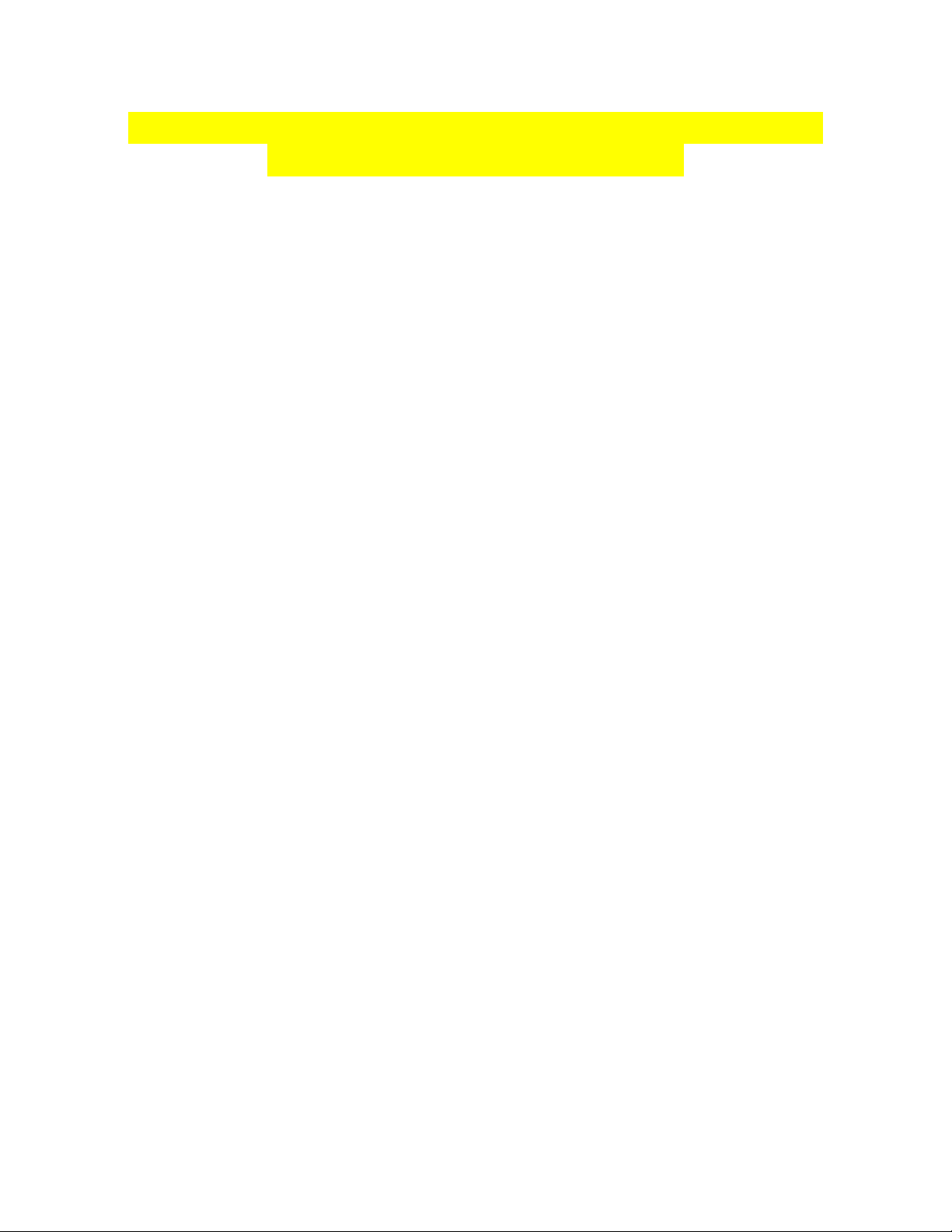
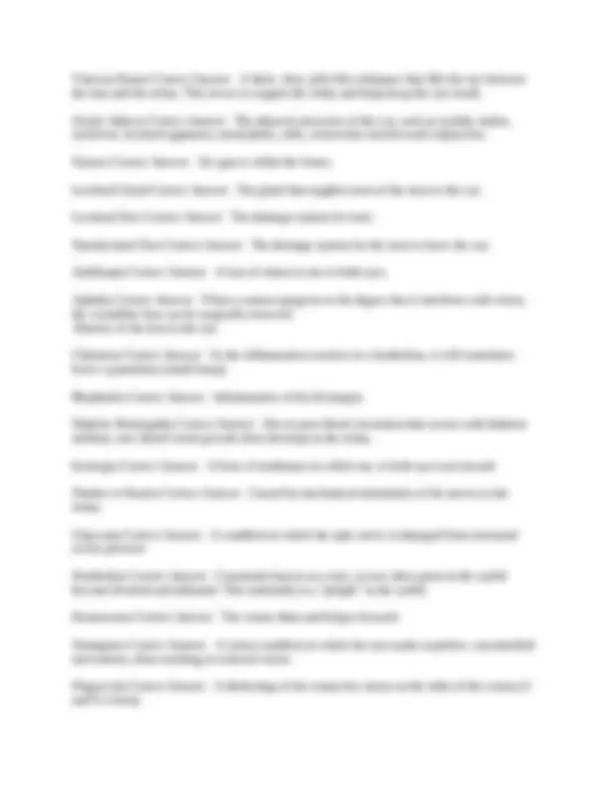
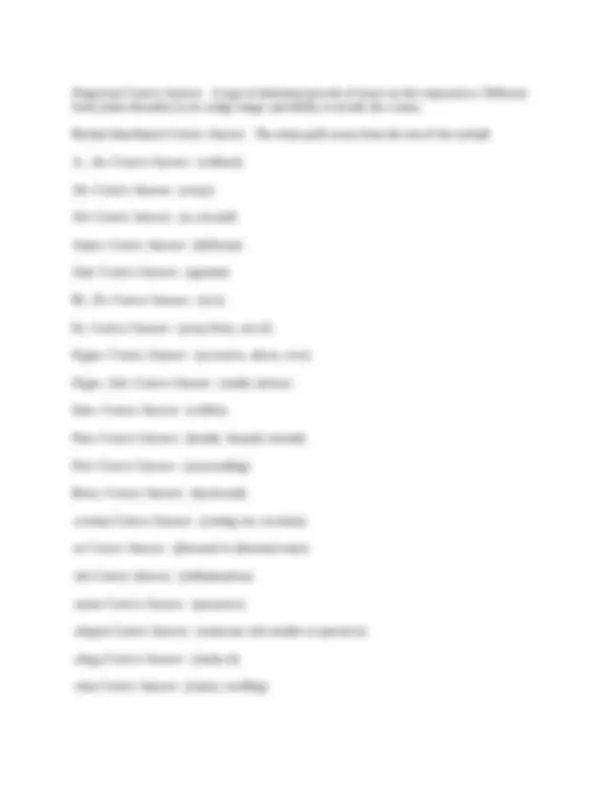
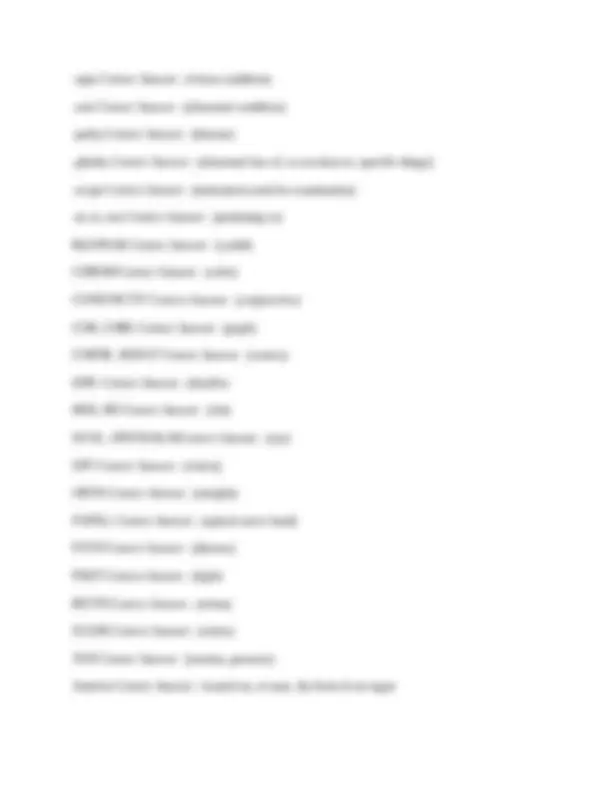
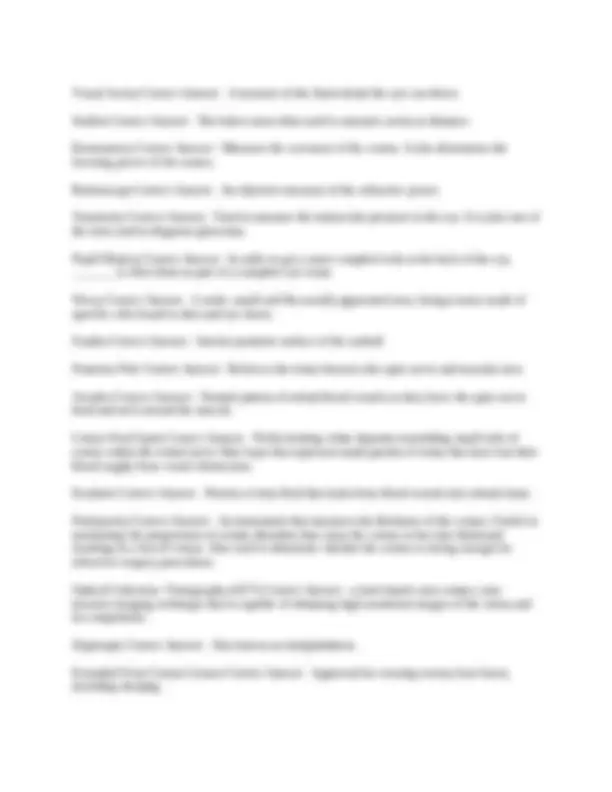
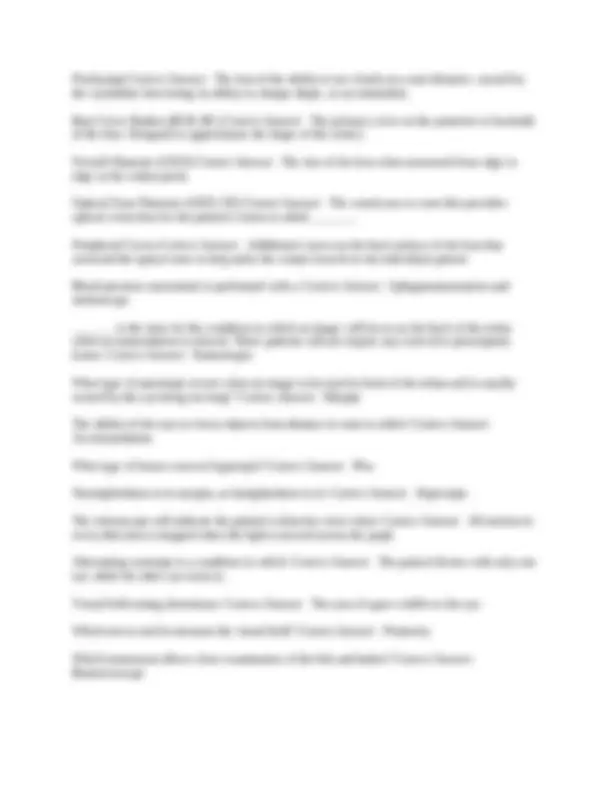
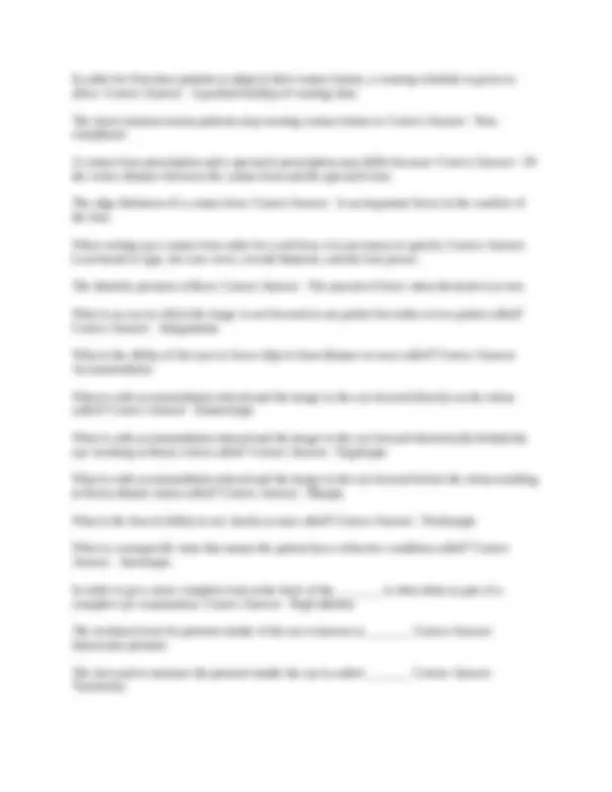
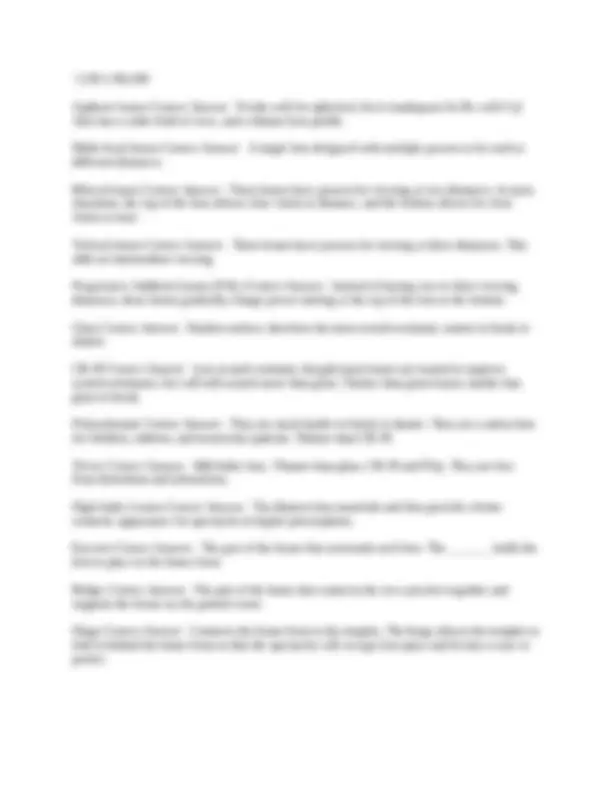
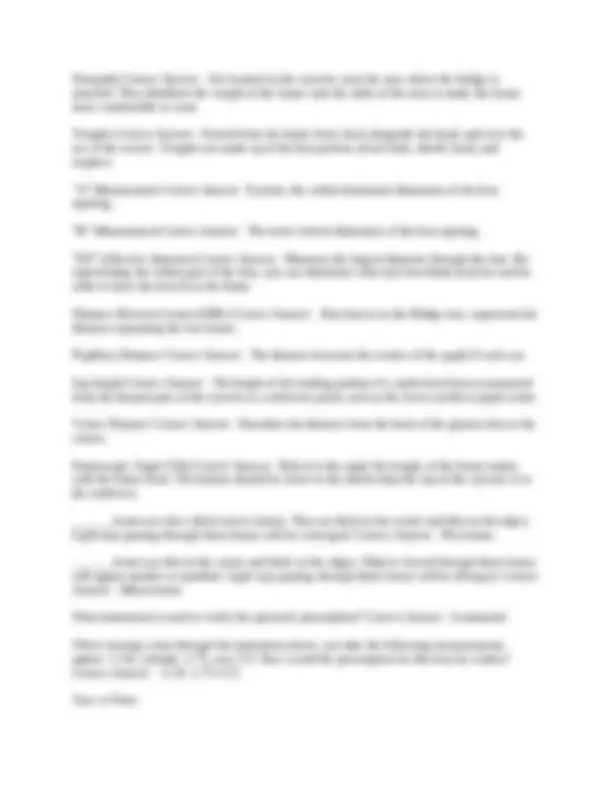
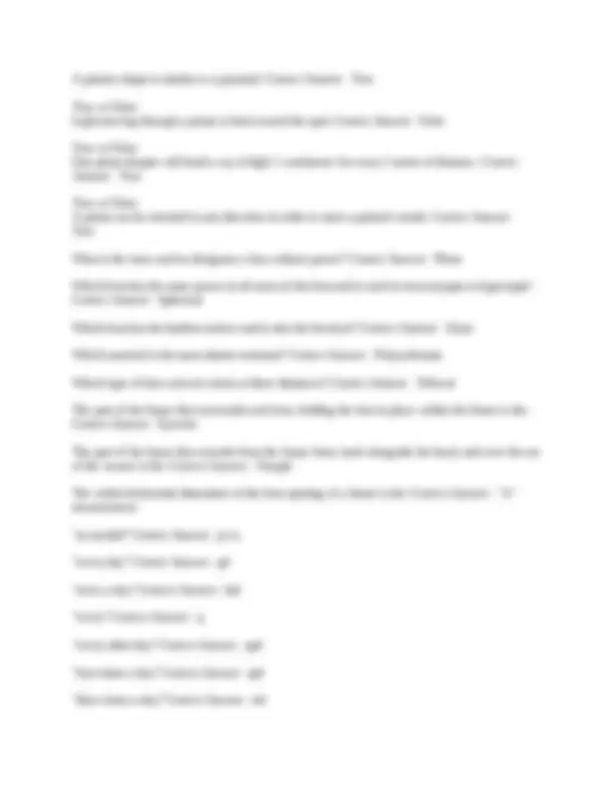
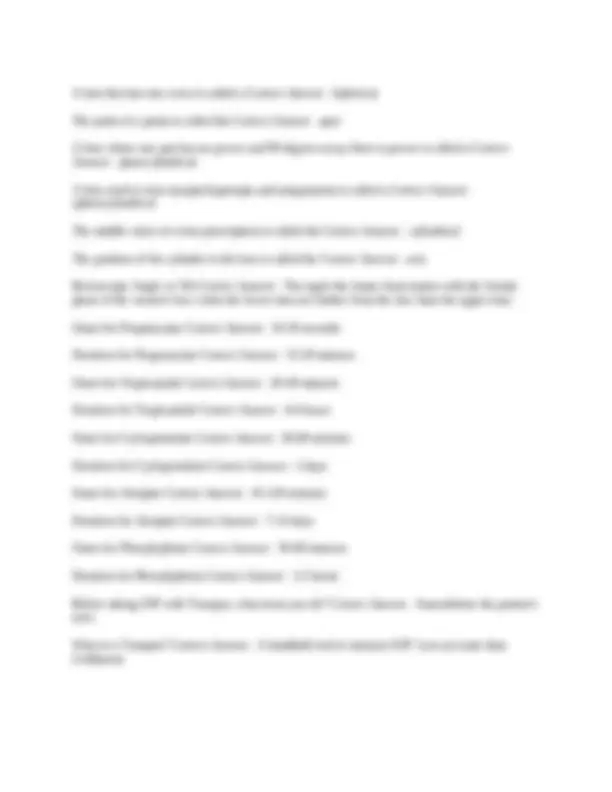


Study with the several resources on Docsity

Earn points by helping other students or get them with a premium plan


Prepare for your exams
Study with the several resources on Docsity

Earn points to download
Earn points by helping other students or get them with a premium plan
Community
Ask the community for help and clear up your study doubts
Discover the best universities in your country according to Docsity users
Free resources
Download our free guides on studying techniques, anxiety management strategies, and thesis advice from Docsity tutors
Certified Paraoptometric (CPO) Exam 320 QUESTIONS WITH COMPLETE SOLUTIONS EXAM 2024/2025
Typology: Exams
1 / 18

This page cannot be seen from the preview
Don't miss anything!











Accounts Payable Correct Answer: Outstanding business obligations that are owed to others. Accounts Receivable Correct Answer: Outstanding obligations owed to the business by others. Cash Flow Statement Correct Answer: A picture of all cash inflows and outflows within the business. Gross Profit Correct Answer: The percentage of business income before expenses. Just in Time (JIT) Correct Answer: A strategy to improve a business return on investment. Net Income/Profit Correct Answer: Revenues minus expenses. Net Worth Correct Answer: The total value of a business. Return on Investment (ROI) Correct Answer: A measurement of success of a project; the percent of profit earned on an investment. An optometrist is licensed by which governing body: Correct Answer: State The person generally responsible for grinding or duplicating lenses is the: Correct Answer: Optician A doctor of medicine specializing in surgery is an: Correct Answer: Ophthalmologist Ophthalmic Medical Personnel can do all BUT Correct Answer: Offer medical diagnoses A person who collects patient data, administers tests of the patient's visual capabilities, and assists in office management would be best described as a/an Correct Answer: Paraoptometric When a staff member receives a call but is busy with a patient, the person answering the phone should politely ask Correct Answer: for a return number or if someone else might be of assistance Prior to scheduling a patient appointment, what should be done first? Correct Answer: Make certain the purpose of the visit is known, to schedule properly What is the most straightforward type of filing system? Correct Answer: Alphabetical Which is not a part of implementing HIPAA? Correct Answer: Unlimited PHI disclosure for staff developing crisis.
Which is not required for documentation of released PHI? Correct Answer: Age, name, password Ciliary Muscle Correct Answer: The muscle inside of the eyeball that alters the shape of the crystalline lens. It has direct control over the focusing ability of the eye. Medial Rectus Correct Answer: The most powerful of the extraocular muscles. Turns the eye toward the nose. Inferior Rectus Correct Answer: Its primary action is to turn the eye downward. Lateral Rectus Correct Answer: Its only action is to move the eyes away from the nose. Superior Rectus Correct Answer: Its primary action is to move the eye upward. Superior Oblique Correct Answer: Rotates eye down and inward Inferior Oblique Correct Answer: Rotates eye up and outward Anterior Chamber Correct Answer: The area inside the eye, behind the cornea, and in front of the iris. Aqueous humor Correct Answer: a clear, watery fluid produced by the ciliary body. It provides nutrients for the lens and posterior cornea. Choroid Correct Answer: Sandwiched between the sclera and the retina. This nourishes the retina. Conjunctiva Correct Answer: clear, cellophane-like tissue that covers the sclera and the inside surface of the eyelids. The palpebral _______ lines the lids, while the bulbar _______ covers the sclera. Fovea Centralis Correct Answer: Area in the macula where visual acuity is the sharpest. Macula Correct Answer: The central part of the retina, which is used for seeing detail. Posterior Chamber Correct Answer: The area behind the iris and in front of the lens. Rods Correct Answer: Photoreceptors that provide black/white vision and are the most sensitive. Cones Correct Answer: Photoreceptors responsible for color vision and for clear central vision. Sclera Correct Answer: The white portion of the eye made up of a tough, fibrous tissue that gives shape and structure to the eyeball.
Ptygerium Correct Answer: A type of abnormal growth of tissue on the conjunctiva. Different from (other disorder) in its wedge-shape and ability to invade the cornea. Retinal detachment Correct Answer: The retina pulls away from the rest of the eyeball. A-, An- Correct Answer: (without) Ab- Correct Answer: (away) Ad- Correct Answer: (to, toward) Aniso- Correct Answer: (different) Anti- Correct Answer: (against) Bi-, Di- Correct Answer: (two) Ex- Correct Answer: (away from, out of) Hyper- Correct Answer: (excessive, above, over) Hypo-, Sub- Correct Answer: (under, below) Intra- Correct Answer: (within) Para- Correct Answer: (beside, beyond, around) Peri- Correct Answer: (surrounding) Retro- Correct Answer: (backward) -ectomy Correct Answer: (cutting out, excision) -ia Correct Answer: (diseased or abnormal state) -itis Correct Answer: (inflammation) -meter Correct Answer: (measurer) -ologist Correct Answer: (someone who studies or practices) -ology Correct Answer: (study of) -oma Correct Answer: (tumor, swelling)
-opia Correct Answer: (vision condition) -osis Correct Answer: (abnormal condition) -pathy Correct Answer: (disease) -phobia Correct Answer: (abnormal fear of, or aversion to, specific things) -scope Correct Answer: (instrument used for examination) -al,-ic,-ous Correct Answer: (pertaining to) BLEPHAR Correct Answer: (eyelid) CHROM Correct Answer: (color) CONJUNCTIV Correct Answer: (conjunctiva) COR, CORE Correct Answer: (pupil) CORNE, KERAT Correct Answer: (cornea) DIPL Correct Answer: (double) IRID, IRI Correct Answer: (iris) OCUL, OPHTHALM Correct Answer: (eye) OPT Correct Answer: (vision) ORTH Correct Answer: (straight) PAPILL Correct Answer: (optical nerve head) PATH Correct Answer: (disease) PHOT Correct Answer: (light) RETIN Correct Answer: (retina) SCLER Correct Answer: (sclera) TON Correct Answer: (tension, pressure) Anterior Correct Answer: located on, or near, the front of an organ
The area of retina responsible for seeing detail is the Correct Answer: Macula The area that is located behind the cornea and in front of the iris is the: Correct Answer: Anterior Chamber What is the ability of the eye to focus objects at varying distances? Correct Answer: Accommodation What is the most commonly used ophthalmic dye which is available in liquid form or impregnated on dry, paper filter strips? Correct Answer: Sodium Fluorescein What is the therapeutic drug used to reduce inflammation? Correct Answer: Corticosteroids Inflammation of the eyelids Correct Answer: Blepharitis Commonly known as "pink eye" Correct Answer: Conjunctivitis Small blood vessel rupture between the sclera and conjunctiva. Correct Answer: Subconjunctival hemorrhage The pores in the eyelid become blocked and inflamed, commonly called a "stye" Correct Answer: Hordeolum A small lump on the eyelid Correct Answer: Chalazion The optic nerve is damaged from increased intraocular pressure. Correct Answer: Glaucoma Advancing age causes the central area of vision to break down Correct Answer: Macular Degeneration The cornea changes to an irregular cone shape Correct Answer: Keratonconus This causes fragile blood vessels on the retina to leak or break Correct Answer: Diabetic Retinopathy Thickening of the connective tissue on the sides of the cornea, usually in the 3 & 9 o'clock positions Correct Answer: Pinguecula The retina pulls away from the rest of the eyeball. Correct Answer: Retinal detachment These are caused by mechanical simulation of nerves in the retina Correct Answer: Flashes Caused by debris in the tears and in the fluid inside the eye Correct Answer: Floaters Cover/Uncover test Correct Answer: Examines the binocular relationship of the eyes.
Visual Acuity Correct Answer: A measure of the finest detail the eye can detect. Snellen Correct Answer: The letters most often used to measure acuity at distance. Keratometry Correct Answer: Measures the curvature of the cornea. It also determines the focusing power of the cornea. Retinoscopy Correct Answer: An objective measure of the refractive power. Tonometry Correct Answer: Used to measure the intraocular pressure in the eye. It is also one of the tests used to diagnose glaucoma. Pupil Dilation Correct Answer: In order to get a more complete look at the back of the eye, _______ is often done as part of a complete eye exam. Nevus Correct Answer: A mole; small and flat usually pigmented area; benign tumor made of specific cells found in skin and eye tissue. Fundus Correct Answer: Interior posterior surface of the eyeball Posterior Pole Correct Answer: Refers to the retina between the optic nerve and macular area Arcades Correct Answer: Normal pattern of retinal blood vessels as they leave the optic nerve head and arch around the macula. Cotton Wool Spots Correct Answer: Fluffy-looking white deposits resembling small tufts of cotton within the retinal nerve fiber layer that represent small patches if retina that have lost their blood supply from vessel obstruction. Exudates Correct Answer: Protein or fatty fluid that leaks from blood vessels into retinal tissue Pachymetry Correct Answer: An instrument that measures the thickness of the cornea. Useful in monitoring the progression of certain disorders that cause the cornea to become thickened resulting in a loss of vision. Also used to determine whether the cornea is strong enough for refractive surgery procedures. Optical Coherence Tomography (OCT) Correct Answer: a laser-based, non-contact, non- invasive imaging technique that is capable of obtaining high-resolution images of the retina and its components. Hyperopia Correct Answer: Also known as farsightedness. Extended Wear Contact Lenses Correct Answer: Approved for wearing twenty-four hours, including sleeping.
In order for first-time patients to adapt to their contact lenses, a wearing schedule is given to allow: Correct Answer: A gradual buildup of wearing time. The most common reason patients stop wearing contact lenses is: Correct Answer: Non- compliance A contact lens prescription and a spectacle prescription may differ because: Correct Answer: Of the vertex distance between the contact lens and the spectacle lens. The edge thickness of a contact lens: Correct Answer: Is an important factor in the comfort of the lens. When writing up a contact lens order for a soft lens, it is necessary to specify: Correct Answer: Lens brand or type, the case curve, overall diameter, and the lens power. The diastolic pressure reflects: Correct Answer: The amount of force when the heart is at rest. What is an eye in which the image is not focused at one pointe but rather at two points called? Correct Answer: Astigmatism What is the ability of the eyes to focus objects from distance to near called? Correct Answer: Accommodation What is with accommodation relaxed and the image in the eye focused directly on the retina called? Correct Answer: Emmetropia What is with accommodation relaxed and the image in the eye focused theoretically behind the eye resulting in blurry vision called? Correct Answer: Hyperopia What is with accommodation relaxed and the image in the eye focused before the retina resulting in blurry distant vision called? Correct Answer: Myopia What is the loss of ability to see clearly at near called? Correct Answer: Presbyopia What is a nonspecific term that means the patient has a refractive condition called? Correct Answer: Ametropia. In order to get a more complete look at the back of the, _______ is often done as part of a complete eye examination. Correct Answer: Pupil dilation The technical term for pressure inside of the eye is known as _______. Correct Answer: Intraocular pressure The test used to measure the pressure inside the eye is called _______. Correct Answer: Tonometry
The specific instrument used to measure the pressure inside the eye is called a _______. Correct Answer: Goldman tonometer Conditions that affect the whole body are called _______ diseases. Correct Answer: Systemic An instrument that measures the curvature of the cornea is called a/an Correct Answer: Keratometer or ophthalmometer An instrument that is worn on the examiners head and used to view the back of the eye is called a.an Correct Answer: Binocular Indirect Ophthalmoscope A test that does not requre responses from the patient is called a/an Correct Answer: Objective The instrument that is used for manual refracting is called a/an Correct Answer: Phoropter The part of the eye examination that serves as a guide for the tests to be performed during the office visit is called a/an _______. Correct Answer: Case History An instrument that can obtain an estimate of the patient's prescription without the patient's response is called a/an_______. Correct Answer: Retinoscope The term that represents how well the two eyes work together is known as _______. Correct Answer: Binocular vision An instrument that gives the examiner a magnified view of the structures of the eye - particularly the front structures of the eye - is called a/an _______. Correct Answer: Biomicroscope or slit lamp The area in space that is visible to the eye is called _______. Correct Answer: Visual Field What is the prescription strength of the lens called? Correct Answer: Lens power What is the primary curve on the backside of the lens called? Correct Answer: Base Curve Radius What are additional curves on the lens that surrounds the optical zone called? Correct Answer: Peripheral curves What is the center area of the lens that provides optical correction for the patient's vision? Correct Answer: Optical Zone What is the measurement from edge to edge of the lens at the widest point called? Correct Answer: Overall Diameter Soft or Rigid Lens? Made from materials that are oxygen-permeable but do not absorb water. Correct Answer: Rigid
+2.00-1.00x Aspheric lenses Correct Answer: Works well for spherical, but is inadequate for Rx with Cyl. Also has a wider field of view, and a thinner lens profile. Multi-focal lenses Correct Answer: A single lens designed with multiple powers to be used at different distances. Bifocal lenses Correct Answer: These lenses have powers for viewing at two distances. In most situations, the top of the lens allows clear vision at distance, and the bottom allows for clear vision at near. Trifocal lenses Correct Answer: These lenses have powers for viewing at three distances. This adds an intermediate viewing. Progressive Addition Lenses (PAL) Correct Answer: Instead of having two or three viewing distances, these lenses gradually change power starting at the top of the lens to the bottom. Glass Correct Answer: Hardest surface, therefore the most scratch-resistant; easiest to break or shatter. CR-39 Correct Answer: Less scratch-resistant, thought most lenses are treated to improve scratch-resistance, but will still scratch more than glass. Thicker than glass lenses, harder that glass to break. Polycarbonate Correct Answer: They are much harder to break or shatter. They are a safety lens for children, athletes, and monocular patients. Thinner than CR-39. Trivex Correct Answer: Mid-Index lens. Thinner than glass, CR-39 and Poly. They are free from distortions and aberrations. High-Index Lenses Correct Answer: The thinnest lens materials and thus provide a better cosmetic appearance for spectacles in higher prescriptions. Eyewire Correct Answer: The part of the frame that surrounds each lens. The _______ holds the lens in place in the frame front. Bridge Correct Answer: The part of the frame that connects the two eyewires together and supports the frame on the patient's nose. Hinge Correct Answer: Connects the frame front to the temples. The hinge allows the temples to fold in behind the frame front so that the spectacles will occupy less space and fit into a case or pocket.
Nosepads Correct Answer: Are located on the eyewire, near the area where the bridge is attached. They distribute the weight of the frame onto the sides of the nose to make the frame more comfortable to wear. Temples Correct Answer: Extend from the frame front, back alongside the head, and over the ear of the wearer. Temples are made up of the butt portion, dowel hole, shield, bend, and earpiece. "A" Measurement Correct Answer: Eyesize; the widest horizontal dimension of the lens opening. "B" Measurement Correct Answer: The most vertical dimension of the lens opening. "ED" (effective diameter) Correct Answer: Measures the largest diameter through the lens. By representing the widest part of the lens, you can determine what size lens blank must be used in order to have the lens fit in the frame. Distance Between Lenses (DBL) Correct Answer: Also known as the Bridge size, represents the distance separating the two lenses. Pupillary Distance Correct Answer: The distance between the centers of the pupil of each eye. Seg height Correct Answer: The height of the reading portion of a multi-focal lens as measured from the deepest part of the eyewire to a reference point, such as the lower eyelid or pupil center. Vertex Distance Correct Answer: Describes the distance from the back of the glasses lens to the cornea. Pantoscopic Angle (Tilt) Correct Answer: Refers to the angle the temple of the frame makes with the frame front. The bottom should be closer to the cheeks than the top of the eyewire is to the eyebrows. _______lenses are also called convex lenses. They are thick in the center and thin on the edges. Light rays passing through these lenses will be converged. Correct Answer: Plus lenses _______lenses are thin in the center and thick on the edges. Objects viewed through these lenses will appear smaller or minified. Light rays passing through these lenses will be diverged. Correct Answer: Minus lenses What instrument is used to verify the spectacle prescription? Correct Answer: Lensometer When viewing a lens through the instrument above, you take the following measurements: sphere +2.50, cylinder -1.75, axis 172. How would the prescription for this lens be written? Correct Answer: +2.50 -1.75 x True or False:
"every bedtime" Correct Answer: qhs Corrects one eye for distance and the other eye for near. Can be used to correct Presbyopia. Correct Answer: monovision A paralysis of the ciliary muscle - so that accommodation cannot occur. Correct Answer: Cycloplegia Refers to imaging by section or sectioning - through the use of any kind of penetrating wave. Correct Answer: Tomography Layers in the cornea Correct Answer: Five. The system for sorting and assigning priorities for medical treatment based on the urgency of the systems. Correct Answer: Triage A mid-index lens material that is thinner than glass or CR-39. Free from distortion and aberration and able to be used as a safety lens. Correct Answer: Trivex Constrictors Correct Answer: Miotics A layer located behind the retina and absorbs unused radiation Correct Answer: Choroid Computer-assisted method of mapping the surface curvature of the cornea. Correct Answer: Topography Dilators Correct Answer: Mydriatics A test that measures the pressure inside your eye - which is called intraocular pressure. Correct Answer: Tonometry Supplies most of the tears to the eye Correct Answer: Lacrimal gland Tropicamide - Atropine - Phenylephrine Correct Answer: Eye dilators Proparacain - Tetracaine - Cocaine Correct Answer: Eye anaesthetics PHI Correct Answer: Protected Health Information The ability to maintain visual focus on an object with both eyes creating a single visual image. Correct Answer: Binocular vision Measurement of the curvature of the cornea. Correct Answer: Keratometry
An ophthalmic stain - available in liquid form and is the most commonly used ophthalmic dye. Correct Answer: Sodium Fluorescein Outermost transparent layer of the eye. Begins focusing process. Correct Answer: Cornea. Opening to the inner eye. Correct Answer: Pupil Controls size of pupil. Correct Answer: Iris Focuses image of object (On retina) Correct Answer: Lens Contains cells that detect light. Correct Answer: Retina Controls shape of the eye. Correct Answer: Ciliary Muscle Transmits information to the brain. Correct Answer: Optic Nerve 1.00 prism diopter deviates light - Correct Answer: 1 centimeter at 1 meter Spherical lenses deviate rays of light in: Correct Answer: -the same direction Light passing through a plus lens will be Correct Answer: converged Light passing through a minus lens will be Correct Answer: diverged The part of the frame that surrounds each lens, holding the lens in place within the frame, is the: Correct Answer: Eyewire The part of the frame that extends from the frame front, back alongside the head, and over the ear of the wearer is the: Correct Answer: Temple A picture representation of the pressure points between the eyeglasses frame and the patient's head is the: Correct Answer: Fitting Triangle Which of the following tilts results when a pair of spectacles is tilted so that the bottom of the lenses is closer to the face than the top? Correct Answer: Pantoscopic The largest diameter through the lens is called the: Correct Answer: Effective diameter A lens that converges parallel light is called: Correct Answer: Convex, Plus A unit of measure for ophthalmic lenses is called Correct Answer: diopter A lens that displaces light rather than focus light is called Correct Answer: Prism A _______ lens diverges parallel light. Correct Answer: concave, minus